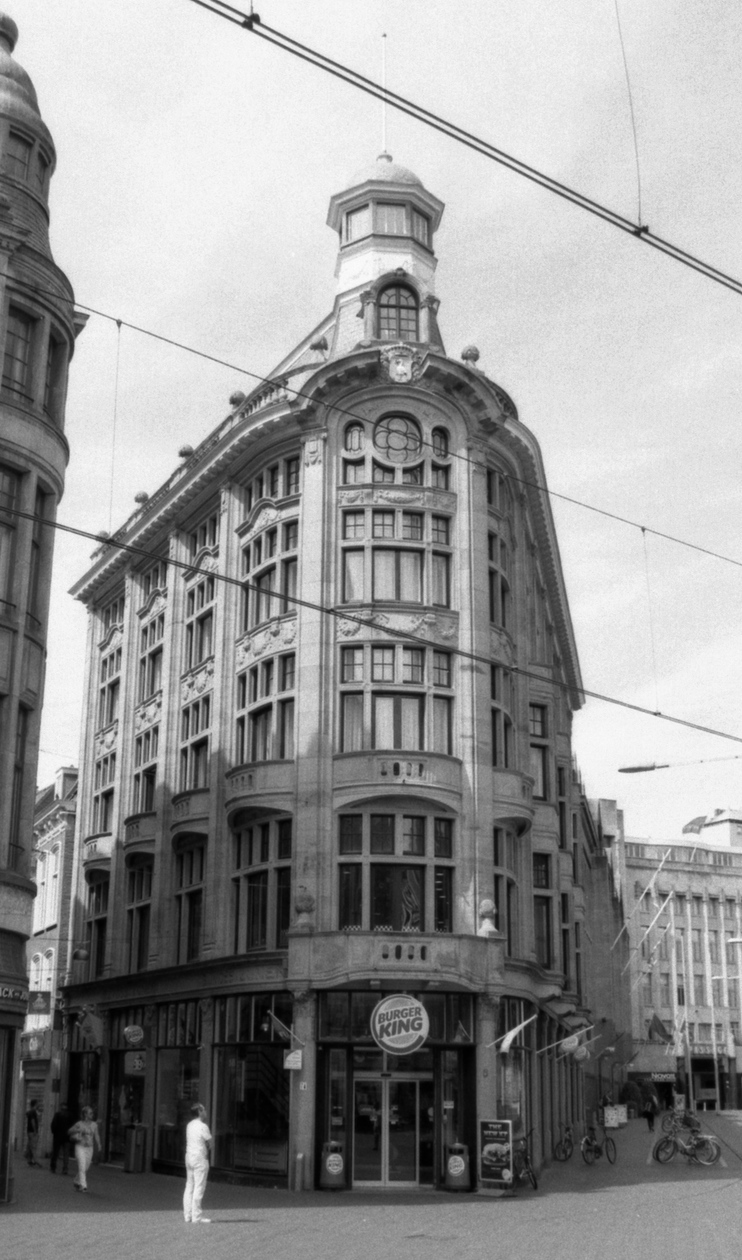
HOME · Twitter · Flickr · LinkedIn · publications · @ Ars Technica · Running IPv6 (Apress, 2005) · BGP (O'Reilly, 2002) · BGPexpert.com · presentations · iljitsch@muada.com
Posted 2014-07-13
I've been experimenting with shooting film a bit recently, which gives me that nice retro feel. And nothing is more retro than shooting black-and-white film. So let's compare the results to the black-and-white images current cameras produce.
In addition to using some classic Ilford HP5 film (well, Ilford HP5 Plus these days), which is very similar to Kodak Tri-X, I also wanted to try out some chromogenic film. Chromogenic film is black-and-white film that is developed using the same C41 process that is used to develop regular color negatives, so you can have it processed pretty much anywhere.
However, although some chain departement stores still offer this service, in practice attempts to use it may get you stuck in a web of confusion. So it's easier to just support your local photo store that still has its own lab, especially if you don't care about prints and scan the negatives anyway. Here in The Hague HAFO runs their lab weekday afternoons so you can have your film developed and/or printed in a few hours.Both color negative and black-and-white, I think slides take longer. But in this case I went to the HEMA and although it took a week the prints came out in proper black and white without a color cast—be it with less than super strong blacks.
In any event, let's look at the same shot using different cameras/film. (Click for larger versions.) First, the iPhone 5. (Actually I took this one almost an hour later than the others, so my position and the light are slightly different.) The iPhone turns in an image that is very contrasty:
The Canon Powershot SX280 HS, on the other hand, produces a rather flat image:
The Nikon D7100 occupies the middle ground:
This is Ilford HP5 Plus film shot using a Nikon FE camera. It looks a bit overexposed but not very contrasty:
And this is Ilford XP2 Super film in a Nikon F55, also overexposed but more contrast:
At these small sizes it's not really possible to judge the grain and detail, so click the different links here to compare the different versions of the crop below. I had to leave out the iPhone version because it was shot from a slightly different angle so it doesn't really compare.
Note that for both the D7100 and the two types of film this is not a fair representation of their best results, as I used a fairly soft lens on the D7100 and not the highest JPEG resolution, while the film was scanned at 2400 DPI. A good scanner can no doubt produce better results, but mine doesn't really produce more detail at higher DPI settings, although the grain gets a bit smoother.
(The building is the Gemeentemuseum (municipal museum) in The Hague, famous architect Berlage's last building, which is designed to illuminate the artwork with daylight that's channeled from the glass roof.)
So what can we conclude?
One caveat: this is ISO 400/27° film. I'm going to shoot some ISO 125/22° Ilford FP4, too, as well as some color Kodak Ektar 100/21° and see how that turns out. But as far as sharpness and grain/noise goes, digital reigns supreme this day and age. HP5+ is surprisingly grainy most of the time, but even though it's the same sensitivity, XP2 Super has a lot less. There's also the phenomenon where scanned images, especially at somewhat lower resolutions, show noticeably more grain than oldfashioned prints or higher resolution scans. HP5+ especially suffers from this phenomenon.
However, the amount of grain visible varies a lot between different photos. Often enough, the grain gets in the way of fine detail, but sometimes it actually adds to the look of the photo. So I see myself shooting black-and-white as well as color film some more in the future, but my D7100 will still be my camera of choice in most situations.
Lest my faithful readers think I only shoot test shots, here a couple of photos that turned out nice, having a classic, timeless look. This is an HP5+ one of the Burger King at the Spuistraat in The Hague. Is the guy in white also admiring the building from 1909, or is he trying to deciding whether to have a hamburger for lunch?

And this one is of the Goudenregenstraat in The Hague shot on XP2 Super.